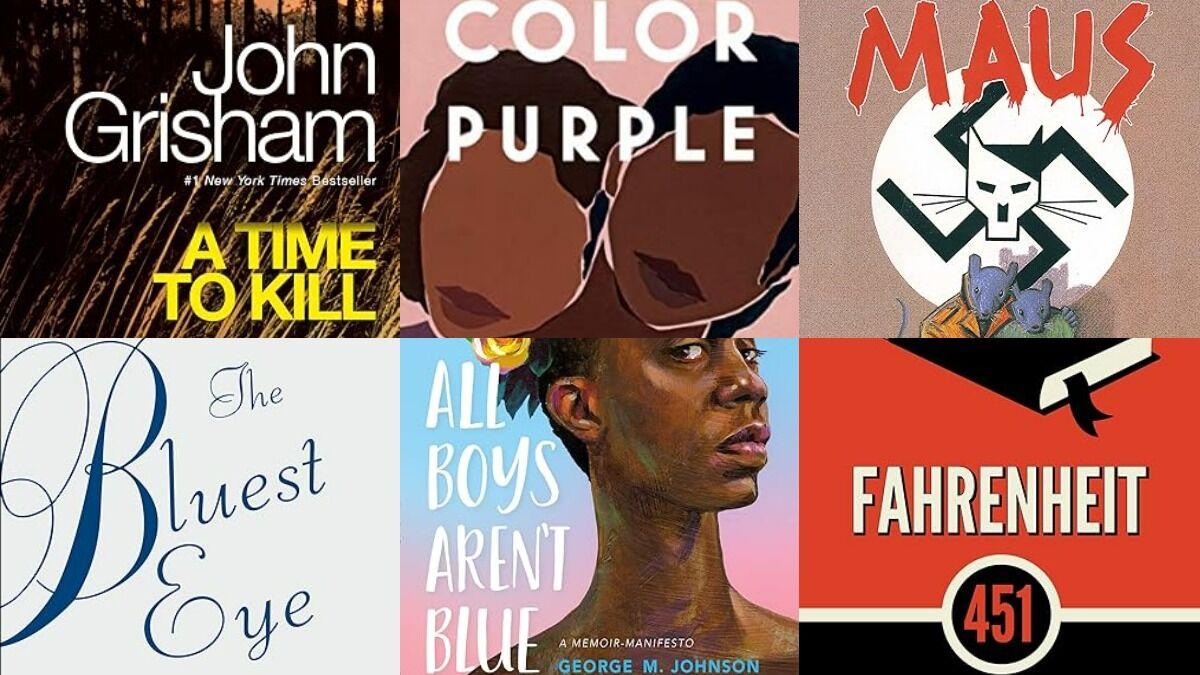The banning of books seems all the rage these days, particularly in conservative strongholds such as Florida and Texas, but government censorship of literature is hardly a new invention.
As early as 1650, books and pamphlets were commonly burned by Puritan officials in Massachusetts.
In 1873, the Comstock Act “repressed” literature and other materials deemed obscene or immoral. Among them: “Leaves of Grass” by Walt Whitman, which was banned for the use of explicit language in some of the poems.
Many banned books are considered classics, but there are recent releases, too. The “Goosebumps” young adult series by R.L. Stine is on the list. So are bestsellers such as “The Glass Castle” by Jeannette Walls, “I Am Not Your Perfect Mexican Daughter” by Erika L. Sanchez, and “Are You There God? It’s Me, Margaret” by Judy Blume.
People are also reading…
To support authors whose work has been censored by American politicians, bookstores and libraries across the country will observe Banned Book Week the first week of October. The Tucson Festival of Books is happy join them, and festival volunteers are inviting readers to sample any of these extraordinary books, all of which have been banned somewhere in the United States.

“Fahrenheit 451” by Ray Bradbury is the poster child for all those books and authors that have been banned and “restricted.” Written in 1953, Bradbury’s prescient classic describes an American society where books have been outlawed, and “firemen” burn every book they can find. The irony of banning a book about book-burners is just too rich to ignore. Did you know the Bradbury family lived briefly in Tucson? Young Ray attended Roskruge School and Amphitheater Junior High. — Bruce Dinges

“A Time to Kill” was John Grisham’s first book, written in 1989. In it, a young white lawyer agrees to defend a Black father who has killed the rapists of his 12-year-old daughter. Because the story was framed in a racist South, it was rejected by all major publishers. It didn’t emerge until Grisham’s second book, “The Firm,” made him a star. To this day, many consider “A Time to Kill” the best of all of the Grisham novels. — Bill Finley

“The Handmaid’s Tale” by Margaret Atwood was published in 1985, but her Republic of Gilead came back to life for modern audiences in a wildly successful TV series aired by Hulu from 2017-22. The “Tale” is set in a future America following a second Civil War. A theocratic, totalitarian society subjects fertile women — known as handmaids — into child-bearing slavery. — Thea Chalow

“All Boys Aren’t Blue” by George M. Johnson is one of the most broadly-banned books in the country. It is a memoir describing Johnson’s coming-of-age experiences as a queer Black boy. It is filled with heartbreaking moments and insightful perspectives about LGBTQ+ people and Black men, in particular. The book helps us understand and empathize with people who find themselves outside societal norms. — Jeaiza Quinones Ivory

“The Adventures of Huckleberry Finn” by Mark Twain has long been a go-to staple for young readers. First published in 1884, it was the sequel to “The Adventures of Tom Sawyer.” It was one of the first American books ever written throughout in regional vernacular. It is told in the first person by Huck. In several places, it is a biting satire on entrenched attitudes, including racism. — Darrell Durham

“The Color Purple” by Alice Walker features a poor, Black, teenage girl who writes letters to God because her father repeatedly beats and rapes her. Published in 1982, it has been a frequent target for censors. More importantly, it received a Pulitzer Prize and the National Book Award for Fiction. — Jessica Pryde

“Maus: A Survivor’s Tale” by Art Spiegelman was the first graphic novel to win a Pulitzer Prize. Portraying Jews as mice and Nazis as cats, it bears witness to genocide in words and images. It is a remarkably unique and profound memoir. — Meg Files

“The Bluest Eye” was Toni Morrison’s first novel and propelled her toward the Nobel Prize for Literature in 1993. Published in 1970, “The Bluest Eye” looked at modern society’s notions of beauty. It featured Pecola Breedlove, a young Black girl who is considered ugly by the prevailing White standards of the day. She dreams of having lighter skin and blue eyes. Who among us hasn’t wanted to change one of our own physical characteristics? — Pam Treadwell-Rubin

“The Hate U Give” by Angie Thomas is a young adult novel that addresses the systemic racism experienced by Starr Carter, who lives in a Black neighborhood and attends a white private school. Those worlds collide when she witnesses the shooting of her best friend by a police officer. Widely banned by conservative school districts, the book is a searing look at the complexities of racism in the U.S. — Kathy Short

“The Catcher in the Rye” by J.D. Salinger is considered an American classic. Intended to be a book for adults, it now is a popular young adult novel with themes of youthful alienation and angst. Its protagonist, Holden Caulfield, has become an icon of teenage rebellion. — Maria Parham

“The Diary of a Young Girl” by Anne Frank is a stunning member of the banned book club. Frank kept a diary while hiding with her family for two years during the Nazi occupation of The Netherlands. Ultimately captured, Frank died in a Nazi prison camp in 1945. An acknowledged classic, the book has been published in 70 languages. — Thea Chalow
Keep current with news from the Tucson Festival of Books by visiting TucsonFestivalOfBooks.org.


















